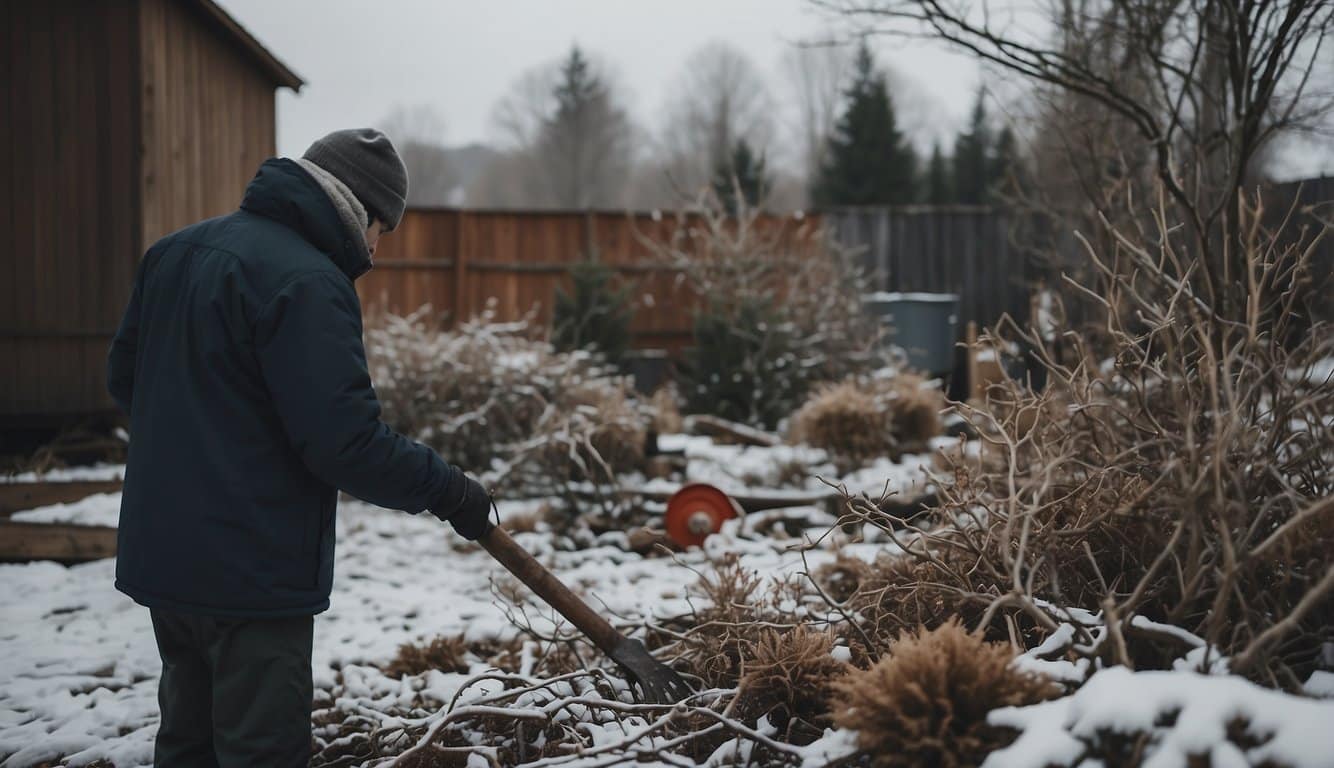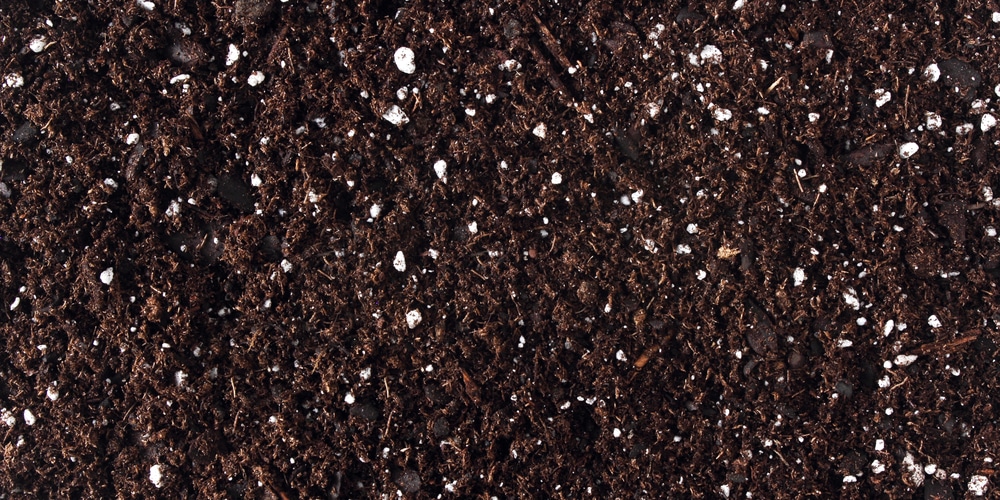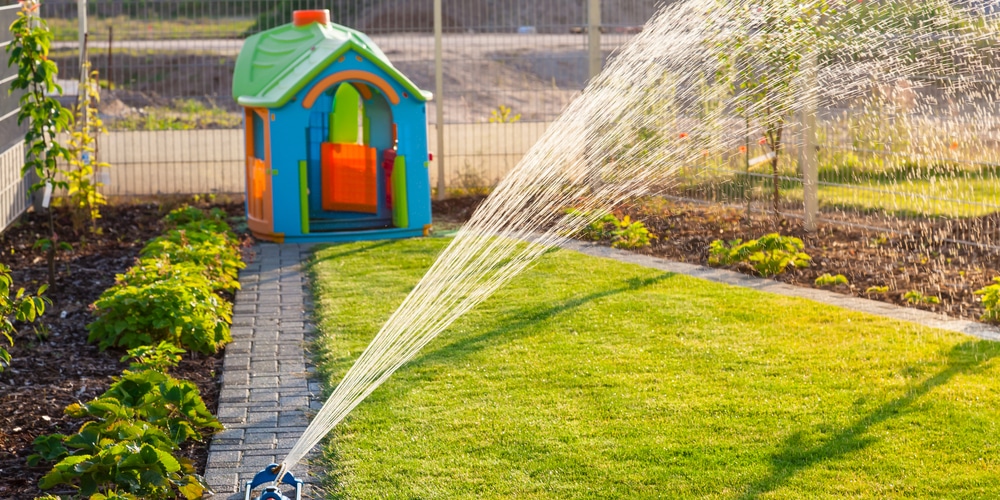Start By Assessing the Winter Damage
As the snow melts and the ground thaws, it’s important to assess your yard for signs of winter damage. Proper evaluation can set the stage for a healthy recovery and a lush lawn come summer.
Inspect Soil Quality
Your first step should be to examine the soil composition and moisture levels.
Heavy snow and ice can lead to soil compaction, which may affect root growth and water absorption.
Consider performing a simple soil test to gauge pH levels and nutrient content.
Amend the soil as necessary to ensure it is loose and fertile for spring planting.
- Soil compaction: Aerating can help alleviate this issue.
- Soil moisture: Overly wet or dry conditions may require adjustments in water practices.
- pH levels and nutrients: Soil testing will determine if lime or fertilizer applications are needed.
Check for Pests and Diseases
Winter can leave your lawn more susceptible to pests and diseases.
Look for irregular brown patches, chewed grass blades, or unusual lawn thinning that can indicate infestation or fungal growth.
- Browning or thinning grass: Can be a sign of grubs or other lawn pests.
- Chewed grass: Presence of visible bite marks on grass may signal a vole problem.
- Fungal growth: Snow mold and other fungi thrive in prolonged snow cover.
Evaluate Plant Health
Finally, assess the condition of trees, shrubs, and perennials.
Check for broken branches, frost cracks, or desiccation that strong winds and cold temperatures might have caused.
- Broken branches: Prune cleanly to promote healing.
- Frost cracks: Seal any wounds to protect against disease.
- Desiccation: Implement appropriate watering to help plants recover.
Cleanup and Maintenance
As spring arrives in Illinois, your yard demands attention to thrive in the coming months. Focusing on cleanup and maintenance sets the foundation for a robust lawn and garden.
Remove Debris and Dead Plants
Begin the spring cleanup of your Illinois yard by removing any leaves, twigs, and other debris that have accumulated over the winter.
This not only tidies up your space but also prevents the growth of fungus and disease which can thrive under such layers.
Clearing away dead plants and last year’s perennials makes way for new growth, allowing sunlight and air to reach the soil.
- Checklist:
- Rake and remove leaves, sticks, and other organic debris
- Dispose of dead annuals and uproot spent perennials
Prune Shrubs and Trees
Pruning is essential for the health of your shrubs and trees. It involves cutting back overgrown branches and removing damaged or diseased limbs that have sustained winter damage.
Ideal pruning times vary depending on the plant species, but many can be addressed in early spring before budding.
- Pruning Tips:
- Look for branches that are dead, damaged, or diseased
- Use sharp, clean tools to make precise cuts
Service Garden Tools
To ensure your garden tools are effective and safe to use, start the spring season with well-maintained equipment.
Sharpen blades of pruners, shears, and mowers, which will make your gardening efforts more efficient and help prevent plant diseases caused by ragged cuts.
Cleaning tools can prevent rust and extend their lifespan.
- Tool Care:
- Sharpen cutting edges for a cleaner cut
- Clean tools after use to prevent rust and soil buildup
Soil Preparation
Proper soil preparation is the foundation for a thriving garden come springtime. By ensuring your soil is at its best, you’re setting the stage for healthy plant growth.
Test Soil pH Levels
Before you introduce new plants or amend your soil, it’s critical to test the pH levels. Your soil’s pH affects nutrient availability and plant health.
In Illinois, the ideal pH for most garden plants is between 6.0 and 7.0.
Simple test kits are available at garden centers, or for a more comprehensive analysis, consider a soil testing service.
Amend Soil Nutrients
Once you know your soil’s pH, you can begin to adjust its nutrient content.
If the soil is acidic (pH below 6.0), incorporate lime to raise the pH.
For alkaline soils (pH above 7.0), apply sulfur or aluminum sulfate to lower the pH.
Additionally, enrich your soil with organic matter such as:
- Compost (enhances structure and adds nutrients)
- Well-rotted manure (avoid fresh manure as it can harm plants)
- Leaf mold (improves water retention)
Till and Aerate the Soil
Tilling and aerating your soil are important steps to improve its structure, especially after winter compaction.
Aim to till the soil when it is dry to avoid damage. Follow these guidelines:
- Till depth: About 8–12 inches deep to accommodate vegetable root systems.
- Aerate: If your soil is prone to becoming compact, aeration can help. Use a garden fork to gently loosen the soil without turning it over.
Planting and Landscaping
With the thaw of winter giving way to the warmth of spring in Illinois, it’s essential to focus on selecting the right plants, designing your garden for maximum appeal, and ensuring your soil retains moisture and nutrients with proper mulch application.
Select Seasonal Plants
When choosing plants for your garden, pay close attention to those that thrive in the USDA growing zones specific to Illinois.
Embrace spring planting by focusing on cool-season flowers and vegetables, like pansies and leafy greens, that can handle the still-chilly nights.
For a flourish of color throughout the year, incorporate native perennials such as purple coneflowers and black-eyed Susans, which are well-adapted to the local climate.
Design Garden Layout
An eye-catching garden begins with a thoughtful layout.
Consider using raised beds or containers to improve drainage and reduce soil compaction, which is beneficial for plant health.
Integrate garden edging to define spaces clearly, and arrange plants in groups based on their height, bloom time, and color to create a tapestry of interest that changes with the seasons.
| Garden Element | Detail |
|---|---|
| Edging | Defines garden beds, pathways |
| Raised Beds | Enhances drainage, eases maintenance |
| Group Planting | Adds visual impact, simplifies care |
Mulch Application
Mulch is a must-have for maintaining a healthy, vibrant garden.
It conserves moisture, controls weeds, and adds a polished look to your landscape.
Apply a 2-3 inch layer of organic mulch such as shredded leaves or bark around your plants, being careful to avoid direct contact with plant stems to prevent rot.
Remember to check the mulch level throughout the growing season and replenish as needed to keep your garden beds protected and looking their best.
Establishing a Spring Care Routine
As you embrace the spring season in Illinois, setting a rhythm for lawn care is essential. Mastering the watering, fertilization, and weed control schedule ensures a lush, healthy yard as the warmer months progress.
Set Watering Schedule
Illinois Spring Weather: Typically, your lawn will require about 1 to 1.5 inches of water per week, counting in any rainfall.
During spring, spread out your watering across the week on two separate days.
Use a rain gauge to keep track of the water your lawn receives naturally to adjust your watering as needed.
- Monday: Check rain gauge and water if needed
- Thursday: Gauge soil moisture, water accordingly
Plan Fertilization
Start fertilization when your lawn shows signs of growth, usually in late spring.
Opt for a slow-release nitrogen fertilizer that feeds the grass over time.
For Illinois yards, April through May is an ideal period to apply your first round of fertilizer.
Stick to the bag’s instructed rates to avoid over-fertilization:
- Early Spring: Choose a fertilizer with pre-emergent herbicide to tackle weeds early
- Late Spring: A nitrogen-rich feed can sustain healthy lawn growth
Implement Weed Control
Preventative measures work best for weed control.
Utilizing a pre-emergent herbicide can prevent weed seeds from germinating.
Do this early in the season before the soil temperature reaches 55 degrees Fahrenheit.
For post-emergence herbicides, target weeds when they are young and actively growing.
Remember, the best defense is a well-maintained lawn:
- Pre-emergence: Apply when forsythia blooms start to fall
- Post-emergence: Use when weeds are noticed but still small, in late spring or early summer
Frequently Asked Questions
Transitioning your yard from winter dormancy to spring vitality involves several crucial steps to ensure a lush, healthy lawn. These FAQs will guide you through the process specific to Illinois yards.
What is the best way to wake up my lawn after winter?
Begin by gently raking your lawn to remove dead grass and debris. This process revives grass blades and fosters better air and moisture penetration to the soil.
This is often the first step to reactivate your lawn’s growth.
What steps are involved in spring lawn preparation and maintenance?
Spring lawn preparation typically includes dethatching, aerating, overseeding patchy areas, applying a pre-emergent herbicide for weed control, and finally, fertilizing to provide essential nutrients for growth.
When is the right time to fertilize the lawn in Illinois for spring?
In Illinois, the ideal time to fertilize your lawn is when the soil temperature consistently reaches 55 degrees Fahrenheit. This often occurs in mid to late spring, around April or early May, when the grass begins actively growing.
How often should I overseed my lawn during the Illinois spring?
Overseeding should be done as needed, particularly if you notice bare spots or thinning areas. In Illinois, overseeding in the spring can help thicken your lawn. Doing it once in early spring should be sufficient if the lawn is generally in good condition.
What are the essential tasks for preparing landscaping for spring?
Essential tasks for spring landscaping include pruning dead or damaged branches, cleaning up flower beds, adding mulch, and planting spring-flowering bulbs if not done in the fall. Also, it’s good to test your soil to determine if any amendments are needed.
What should be included in a spring lawn care checklist for the Northeast?
Your spring lawn care checklist in the Northeast should involve removing leaves and debris. You should also check for compacted soil, dethatch, aerate, seed, and apply a balanced fertilization. Additionally, address any needs for disease and pest control early on to avoid larger issues as the season progresses.
Last update on 2025-06-06 / Affiliate links / Images from Amazon Product Advertising API





